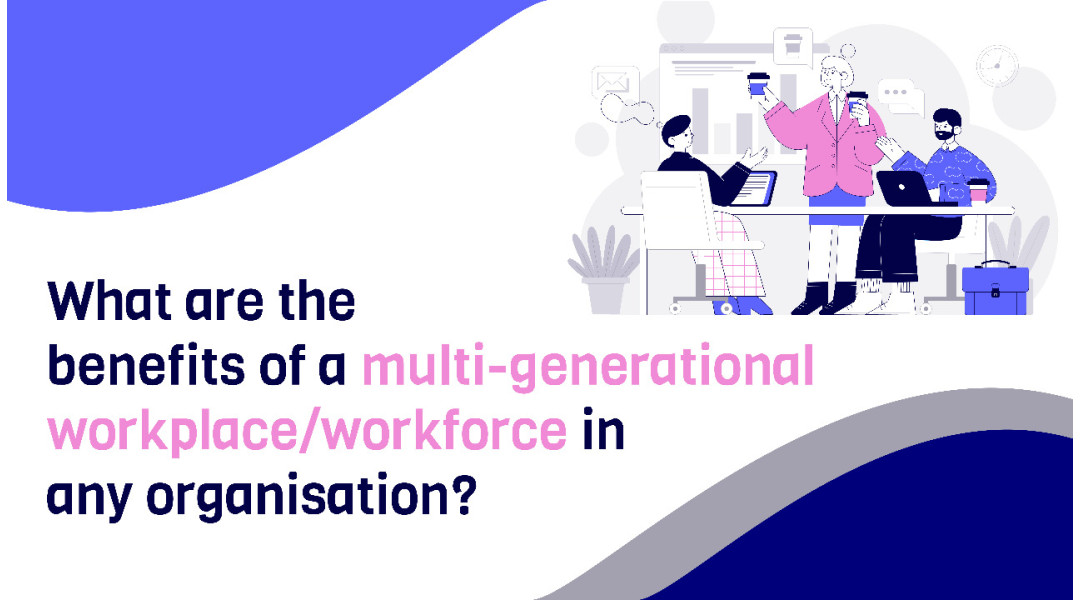

An organization is formed of diverse personnel not only regarding experience, and qualification but age group too. We can see multiple generations working in a single organization. We can observe the collaboration of five generations working in an organization with the combination of the plentitude of communication styles, motivational preferences, distinct personalities, and many more. In nutshell, a multi-generational workforce or workplace is the manpower composed of several generations working together.
Generally, a multigenerational workforce is comprised of the groups enumerated below:
Born between 1925 and 1945: Pre-Boomers, Silent Generation, or Traditionalists
Born between 1946 and 1965: Baby Boomers
Born between 1965 and 1976: Generation X
Born between 1977 and 1994: Generation Y, Millennials
Born between 1995 and onwards: Generation Z, iGeneration
Note: The years can differ according to various research articles.
Today’s age is the age of digitization and most individuals are dedicated to choosing the work post-retirement stage too. This might be the possible reason for the trending multigenerational workforce in any organization. In an organization with this kind of workforce, there is the collaboration of fresh and innovative ideas with the industrial expertise and experience of the people before Gen Z.
Summing up the multigenerational workforce, it is:
With the mixture of fresh ideas and history-long industrial expertise, companies sure have a competitive advantage. Creating a new and big market with the combined past experiences and innovation will surely bring greater efficiency to the organization. When new technology and past specialized learnings get combined, it surely brings Innovation within the organization along with the marketplace.
When there is diverse internal talent, the company keeps on preparing a stalwart workforce who are ready to tackle challenges in the future with innovative ideas and knowledgeable expertise. With the availability of such a workforce, the organization can invest in making the workforce more strong and more prepared, reducing further hiring costs.
Matured generations are considered the mentors for the younger generations whereas exposure to technology can make the past learnings of the previous generations more instrumental in creating the best business management practices. Critical knowledge with strong commercial acumen and fresh concepts can reap the best results in the organization.
There is the transfer of knowledge between each-other generations in such a workplace. And the trend of reverse/cross-generational mentoring is also galloping where not only do older generations fill the minds of younger generations with expertise and past ideas but also younger generations teach older ones about new ideas, technology, and the digital revolution. The mentoring sessions among the workforce can impact organizational productivity.
The workplace must become a second home and family then only staff are interested to arrive at the workplace. With the multigenerational workforce in the organization, there exist meaningful and strong relationships with coworkers as there are learning opportunities and sharing of expertise with each other.
As there is age diversity in the multigenerational workforce, there are multiple differences in many sectors. It’s said that there is no one-size-fits-all solution. There are differences in viewpoints, mindsets, communication issues, and negative stereotypes between coworkers with the assumption of younger generations as oversensitive “snowflakes” and older generations as old hags. There are also variations in employee expectations, duties, compensation packages, and many more.
Despite such challenges, HR can play a great role in bringing out the best in the talent pipeline with the research in the understanding of different career motivators of each worker, building a healthy talent pipeline, and ensuring sustainable business growth and management practices.
An HR department can play a vital role in upgrading the multigenerational workforce through the following management practices:
As a multigenerational workforce adds greater value to the organization, each employee must know its importance. There should be mutual understanding and communication between older G and younger G for the better best of the team and organization too.